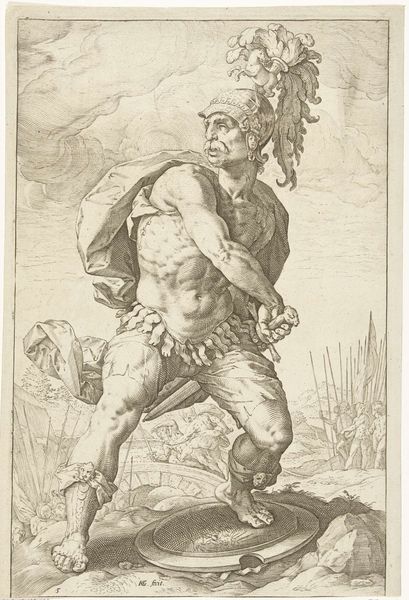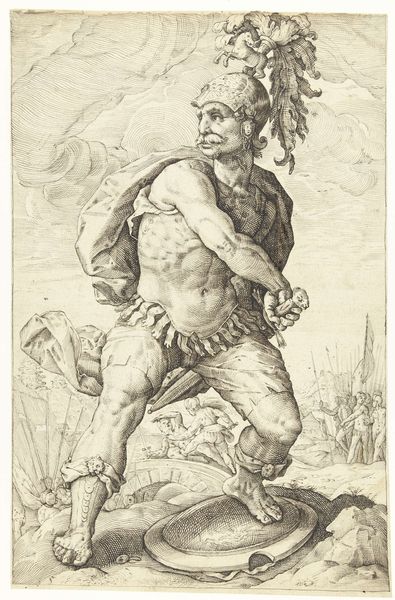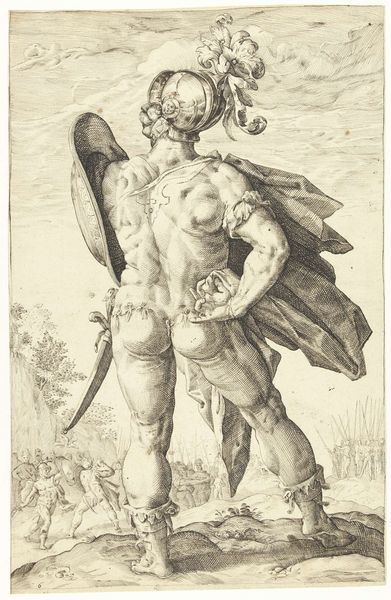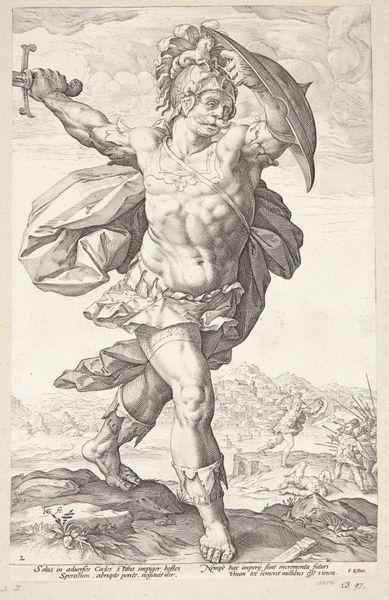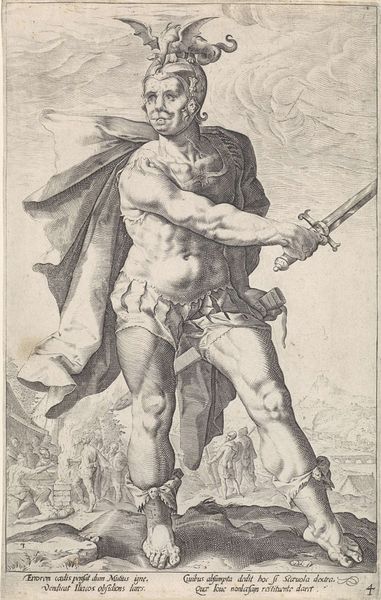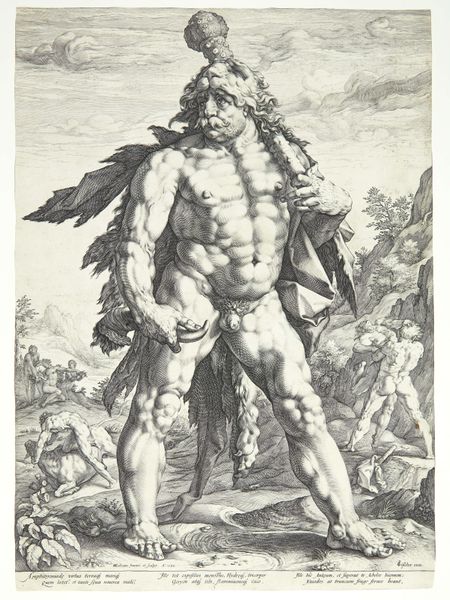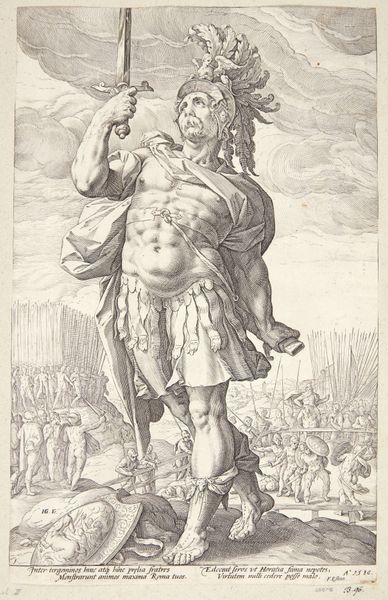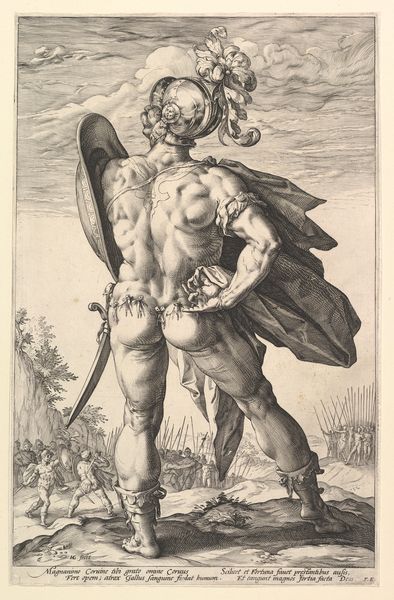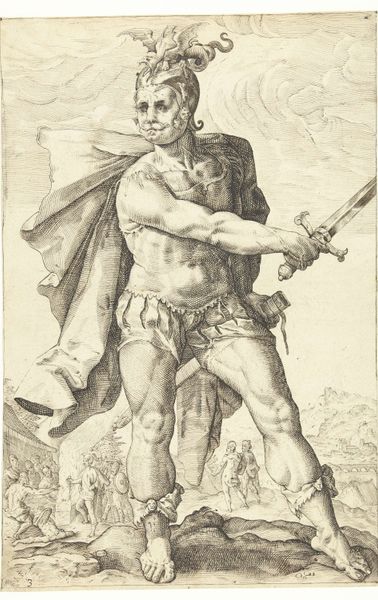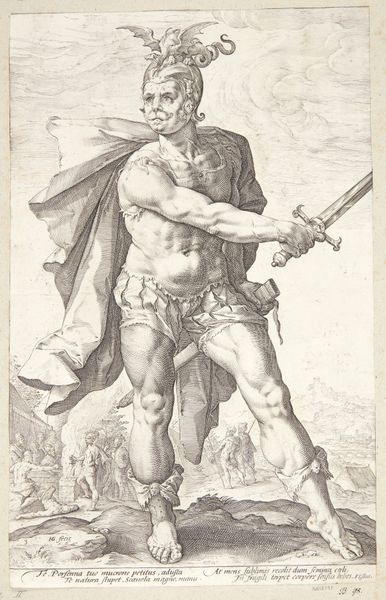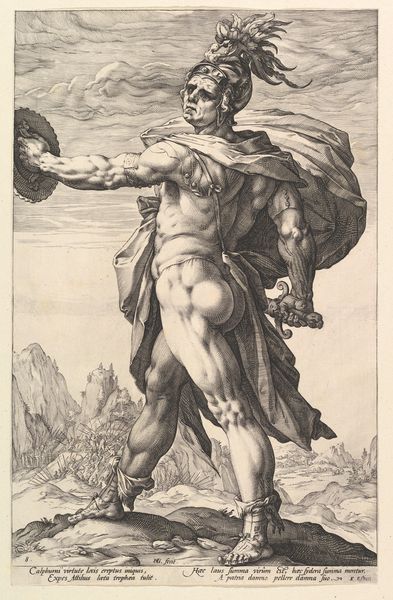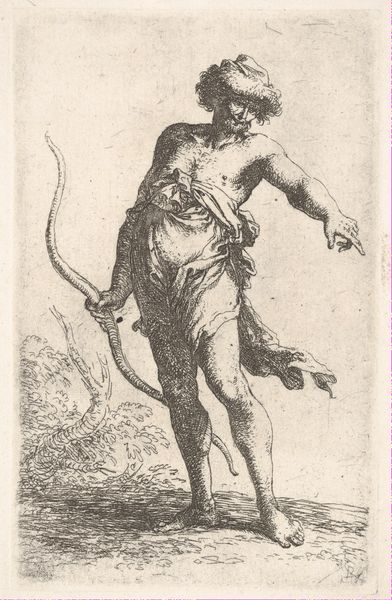
Dimensions: 36.83 x 23.65 cm
Copyright: Public domain
Curator: Look at the scale and muscularity of Titus Manlius Torquatos here—Hendrick Goltzius created this print in 1586, rendering the Roman hero through meticulous engraving. It’s quite arresting, wouldn’t you agree? Editor: Yes, immediately striking! The figure exudes raw power. He's trampling what seems to be weapons, and in the background there's a line of spears indicating perhaps troops waiting for something to happen. The drama lies in the composition as well, which feels strangely... elevated and tense? Curator: The tension is key. Goltzius was deeply invested in conveying human stories, and as a print, it allows access to a wider range of consumers due to it being easily mass-produced with labor, but let's talk about process. Notice the cross-hatching and the almost sculptural quality Goltzius achieves—a real testament to his technique and mastery. What sort of labor and resources would have been needed to bring about this scene? How does that effect its cultural influence and accessibility to different economic groups within society at that time? Editor: Beyond technique, what draws me is the loaded symbolism. Torquatos standing over broken armour implies that strength overcomes warfare. Look at the helmet plumes. Those were more often a matter of status signaling to say you were in someones cavalry - what emotional associations could an audience read in such imagery in relation to military leadership or victory itself? The entire image carries not just narrative weight, but historical weight of ancient wars, mythologies that may have shaped its audience. Curator: But it’s also about accessing art to influence perception. The material production of images played such a huge part in the way audiences in Goltzius' time encountered classic Roman History. If it didn't depict them slaying dragons with superhuman power in great poses, what was the point of mass producing artwork like this? It’s easy to imagine its widespread influence—a tool used to glorify Roman conquests as Goltzius made images broadly accessible by making printed sheets using very accessible labor methods, after all! Editor: Perhaps it worked that way but that overlooks the psychological resonance of symbols to do with heroes in armor through imagery; memory and emotional impact. And perhaps to this end that still shapes a modern sense of ourselves! I think a lot can be appreciated in understanding what it has managed to do, in this specific print work. Curator: I see it differently but your viewpoint gives me cause to pause. Thinking about what goes into mass artwork for popular purposes is a new lens for me too! Editor: Indeed, the blend of artistic skill and visual encoding remains compelling across centuries and opens doors into new avenues to reflect back on!
Comments
No comments
Be the first to comment and join the conversation on the ultimate creative platform.
